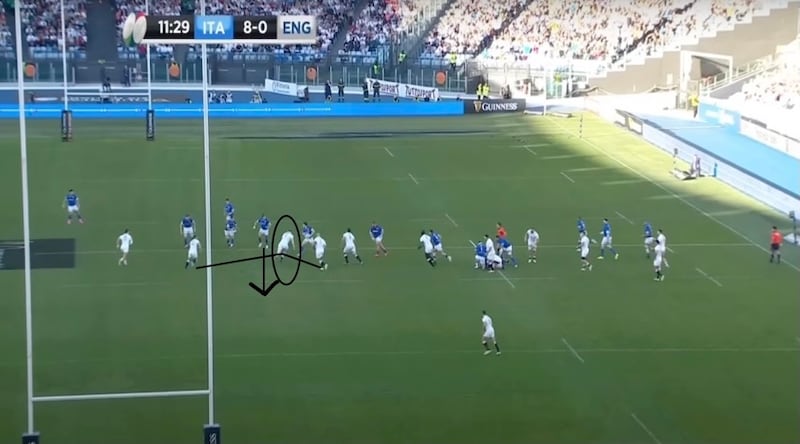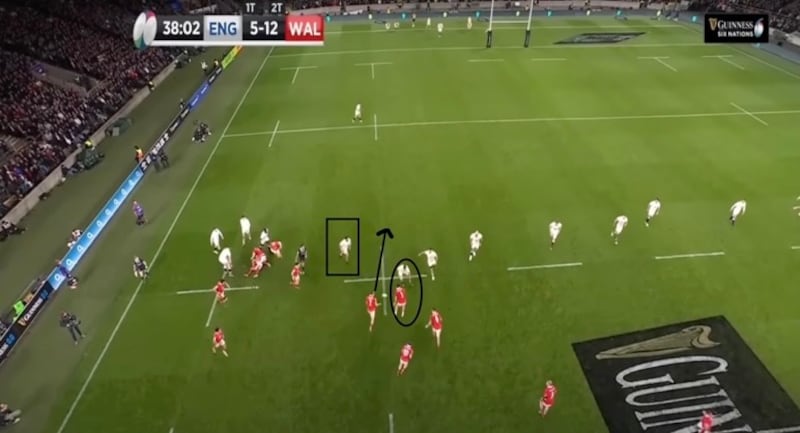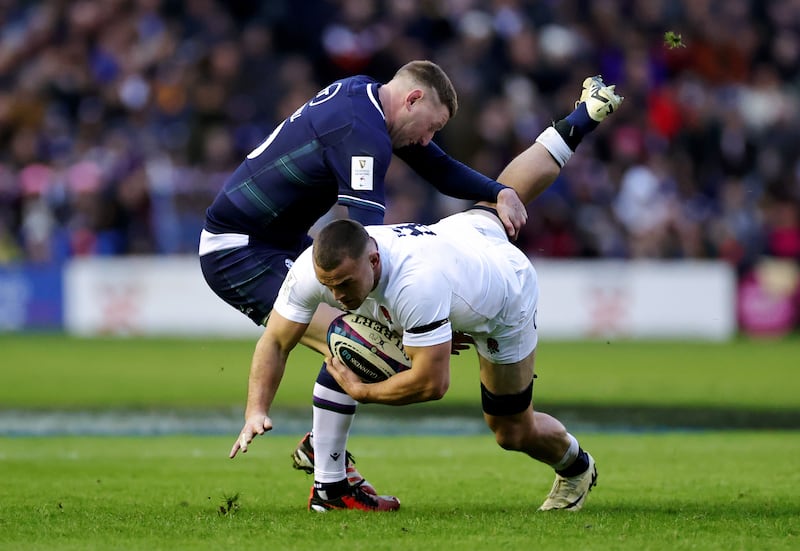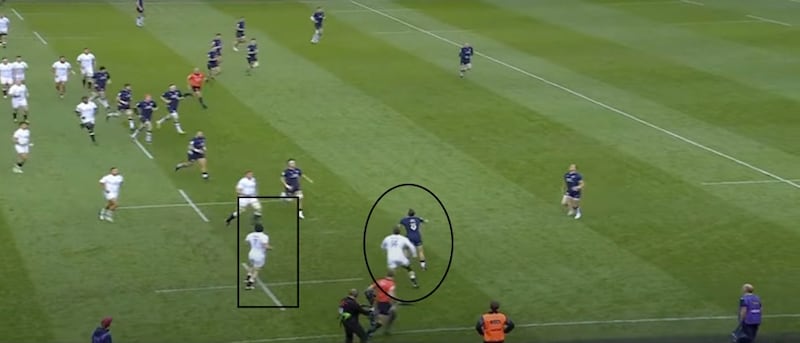Expose England’s inefficient attack
Despite reports in the English press that they are focusing more on their defence in training, England’s attack is not as bad as many would have you believe.
They are willing to play with the ball far more than they did in the World Cup. In that infamous semi-final vs South Africa, England kicked away 93 per cent of their possession, made only 88 carries and – astonishingly – forced zero line breaks.
By contrast, so far in this tournament, they are averaging 98 carries and just more than four line breaks per game. You could point to fixtures against weak Italian and Welsh sides inflating these numbers, but even against Scotland England beat 22 defenders and made four line breaks.
England also have the best tackle evasion rate of this year’s Six Nations (22.9 per cent). They have the highest rate of committing at least two (62.6 per cent) and three (13.9 per cent) tacklers.
UL Bohemian duo Aoife Corey and Jane Clohessy in line for first Ireland caps against Scotland
Should the 7-1 split be outlawed?
Erin King injury casts shadow over Ireland’s Six Nations preparations
‘Ulster will be a huge test’: Leinster’s Tommy O’Brien on Saturday’s URC match and his international hopes
England have been at times an incisive outfit. However, the issue is scoring efficiency. Against Scotland, errors in attacking positions cost them dearly, none more so than George Furbank’s spill which allowed Duhan van Der Merwe to score. England made 25 handling errors in that game, a criminally high number.
Only 23.1 per cent of England’s line breaks have led to tries. Ireland’s figure of 36.7 – second highest in the competition – shows a killer instinct that we have not yet seen from the English.

Ireland's Twickenham Test
Thrive in chaos
The biggest talking point this week has been England’s new blitz defence. With Felix Jones, South Africa’s old attack coach, now in charge of Steve Borthwick’s defence, England have employed a similar system to the Springboks with a fast line speed looking to catch ball carriers behind the gainline.
England’s tackle success rate – 85.3 per cent – is the lowest in the competition. Just like South Africa, England don’t mind missed tackles if you are flying out of the line and still creating pressure.
However, unlike the ‘Boks, England’s ability to scramble has not been stellar, 17.8 per cent of England’s missed tackles have led to tries, the highest figure in the tournament. Perhaps they lack the straight line speed of the Springboks in the wide channels when scrambling to cover a break after rushing up.
Against Scotland, England by and large defended well in general phase play, a first-phase strike for van der Merwe’s first try aside. Scotland had the majority of their attacking joy off transitioning quickly from defence into attack. Van der Merwe’s second two tries came from finding gaps off scrappy ball when England lacked defensive organisation.
The inability to recover once an initial break is made should reassure Ireland if they do struggle to initially punch through. Based on statistical evidence, they won’t need as many line breaks as they have been making (30 so far this tournament) to find crucial scores.
Target the big men
A blitz defence is often only as fast as its slowest runner.
Italy and Wales showed this by capitalising on disconnects created by faster defenders shooting up and leaving their slower team-mates behind, thus creating gaps.
In Rome, English lock Ollie Chessum came flying out of the line to attack Paolo Garbisi. Joe Marler was the defender opposite the Italian 10, but as a prop, he lacked the speed to get in his face, so Chessum intervened.

However, when the Leicester lock failed to stop Garbisi from getting his pass away, his rush left a big gap on his outside. Neither the defender on his left nor Marler on the inside could fill in. Italy burst through and scored.
Similarly in Twickenham, Wales found joy exploiting the lack of speed of another prop, Will Stuart. With backrow Ethan Roots again flying out of the line and failing to shut down the ball, an inside pass allowed Tommy Reffell to exploit the space left by Stuart’s lack of pace. Another break, another try.

Ireland have shown an ability to target heavy forwards in the defensive line. They did this against Wales, forcing prop Dillon Lewis to virtually collapse due to defensive fatigue, allowing Tadhg Beirne to score untouched with the last play of the game.
Ireland do pass the ball beyond the first (39.2 per cent) and second receiver (16.7 per cent) more than any other Six Nations team, but they also have a ruthless narrow attack that can expose flagging frontrow forwards.
Breakdown
When Ireland last lost a Test, vs New Zealand in the World Cup, Ardie Savea and Sam Cane disrupted the Irish breakdown as the All Blacks won seven turnovers in the game. Contrast that to Wales winning just three nearly a fortnight ago in the Aviva.
In Sam Underhill and Ben Earl, England have picked two specialist poachers in their backrow. This is a ploy they have used against other teams as well, but Borthwick is certainly aware of the importance of disrupting Ireland on the floor given their desire to dominate possession.
Ireland’s forwards coach Paul O’Connell is renowned for the level of detail he impresses upon his charges when they look to secure quality ruck ball. The figures demonstrate what he is doing is working. Among the forwards, Ireland have three players in this Six Nations recording an effective arrival at an attacking ruck at least 90 per cent of the time: Tadhg Furlong (91), Beirne (90) and Peter O’Mahony (92).

By contrast, of England’s starting pack, only Ben Earl has such a figure (90 per cent).
Ireland need quick ball to minimise the time England’s rapid defensive line has to get set. England need it to pose any questions at all given Ireland’s defensive record. Based on a limited sample of the tournament so far, Ireland look marginally better equipped.
Watch the skies
Much has been made of England’s selection at fullback. When aerial specialist Freddie Steward is playing, people think England kick plenty. When he’s not, they run more, or so the theory goes.
In the two games where Steward played in this tournament, England kicked 31 and 32 times. Against Scotland, where a more natural runner in Furbank played at 15, they kicked 31 times. Furbank starts against Ireland and England will still kick often.
When England were in the ascendancy in the first quarter against Scotland, their kicking game earned them plenty of territory; 56 per cent of the whole game was played between halfway and the Scottish 10m line.
This was partly due to Scotland’s iffy-at-best kick escort, failing at times to block England’s chaser and protect their backfield player going up for the ball.

England’s kicking success was also down to clever strategy. Off their first lineout of the game, they went wide, forcing Scotland’s backfield to shift in that direction, leaving the opposite flank exposed. Diminutive scrumhalf Ben White was the only cover on the far wing, a size mismatch with England’s designated chasers once Ford decided to kick.
England will be clever with how they manipulate Ireland’s backfield. Hugo Keenan et al must be alive to the ploy, while they will also need kick escort protection from those in front of them.
















